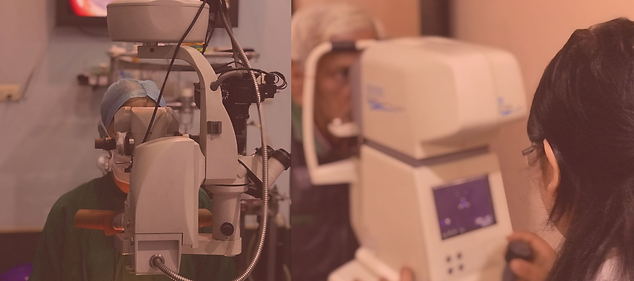
Glaucoma treatment in Gurgaon
Glaucoma is a leading cause of blindness for people over 40 years old. But blindness from glaucoma can often be prevented with early treatment.
Glaucoma is a silent thief of sight.
Glaucoma has no symptoms in its early stages. In fact, half the people with glaucoma do not know they have it ! Having regular eye exams can help your ophthalmologist find this disease before you lose vision. Your ophthalmologist at our centre, can tell you how often you should be examined.
What is Glaucoma?
Glaucoma is a disease that damages your eye’s optic nerve. It usually happens when fluid builds up in the front part of your eye. That extra fluid increases the pressure in your eye, damaging the optic nerve. Arunodaya Deseret Eye hospital offers Glaucoma treatment in gurgaon sector 55- 56, golf course road. Book an appointment today with our glaucoma experts.

WHAT WE DO ?
The Glaucoma Department is led by Dr Sahebaan S Sethi, a trained and well known Glacuoma Specialist in Delhi NCR, supported by 3 other ophthalmic surgeons. The department is geared to treat the full range of glaucoma conditions, including complex cases like neovascular glaucoma and post-surgical cases. Dr Sahebaan & team has been awarded on multiple occasions by organisations both domestic and overseas for her contribution in glaucoma. Glaucoma is a progressive eye disease caused by damage to the optic nerve (the seeing nerve of the eye) when high fluid pressure within the eye damages the delicate fibres of this nerve.
Primary Open Angle Glaucoma (POAG)
It happens gradually, where the eye does not drain fluid as well as it should (like a clogged drain). As a result, eye pressure builds and starts to damage the optic nerve. This type of glaucoma is painless and causes no vision changes at first.
Some people can have optic nerves that are sensitive to normal eye pressure. This means their risk of getting glaucoma is higher than normal. Regular eye exams are important to find early signs of damage to their optic nerve.
Angle-closure glaucoma
(ACG)
This type happens when eye pressure builds due to structurally narrow drainage angle in the eye. This impedes the drainage of fluid out of the eye, resulting in accumulation of the fluid and resultant increase pressure in the eye. When the drainage angle gets completely blocked, eye pressure rises very quickly. This is called an acute attack. It is a true eye emergency, and you should call your ophthalmologist right away or you might go blind.
TREATMENTS OFFERED
MEDICATIONS
Glaucoma is usually controlled with eye drops. Used everyday, these eye drops lower eye pressure. Some do this by reducing the amount of aqueous fluid the eye makes. Other reduce pressure by helping fluid flow better through the drainage angle.
Glaucoma medications can help you keep your vision, but they may also produce side effects. Some eye Drope may cause:
-
A stinging or itching sensation
-
Red eyes or red skin around the eyes
-
Changes in your pulse and heartbeat
-
Changes in breathing (especially if you have breathing problem)
LASERS
Two main types of laser surgery to treat glaucoma, the "trabeculoplasty" and the "iridotomy". They help aqueous(fluid) drain from the eye and thereby reduce the pressure These procedures are usually done as an outpatient surgery procedure in the OPD.
SURGERY
Surgery is done with the main aim to make an alternate drain route in the eye and thereby reduce pressure. Most commonly, is performed, which is a procedure in which your surgeon will create a tiny bubble hidden under the upper eyelid to make an alternate path of drainage

KEY FACTORS & FIGURES
50000+
Surgeries
25+ Years
PHACO
MICS
Available
TORIC Correction
For
ASTIGMATISM
Premium
IOS
WHAT OUR PATIENTS SAY
WRITE TO US







